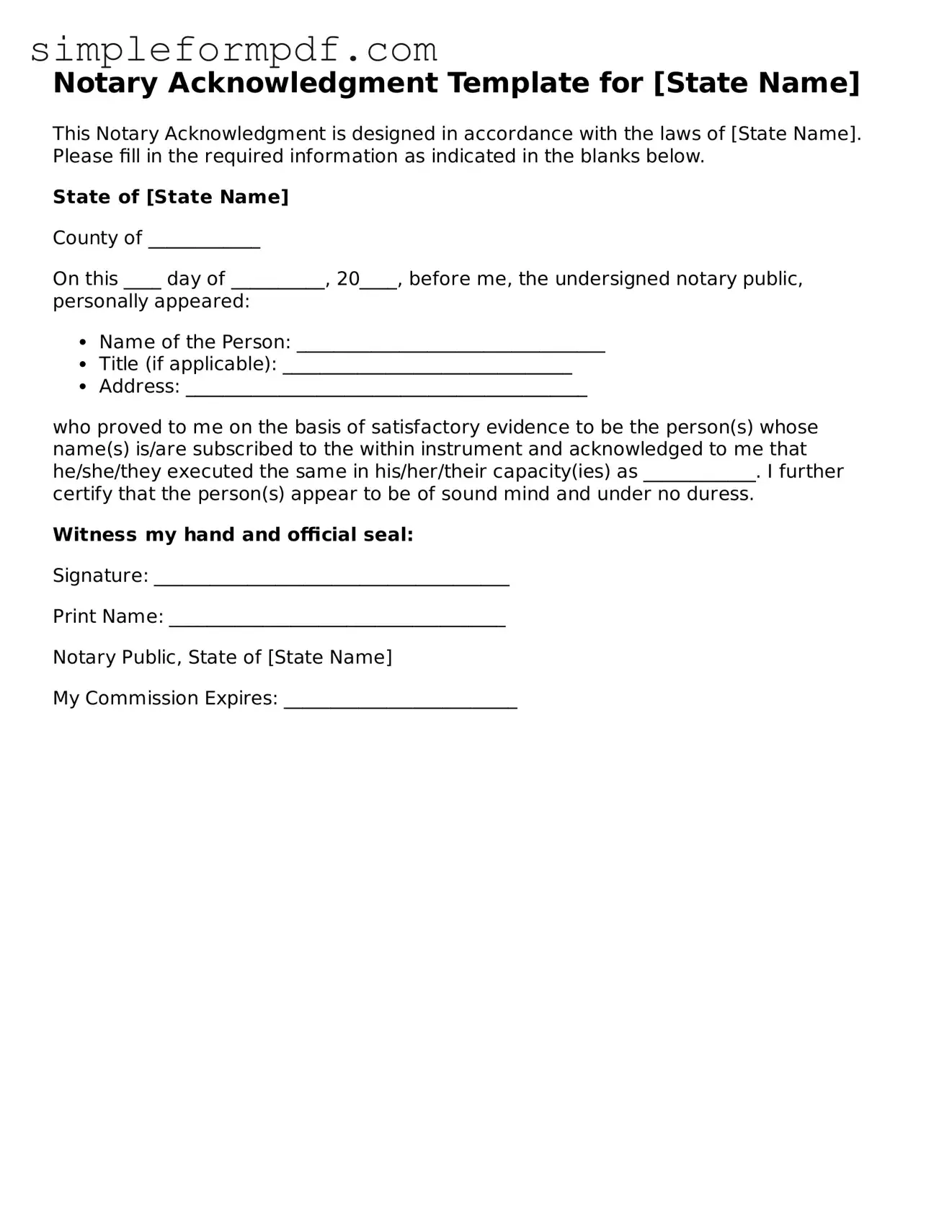Notary Acknowledgment Template for [State Name]
This Notary Acknowledgment is designed in accordance with the laws of [State Name]. Please fill in the required information as indicated in the blanks below.
State of [State Name]
County of ____________
On this ____ day of __________, 20____, before me, the undersigned notary public, personally appeared:
- Name of the Person: _________________________________
- Title (if applicable): _______________________________
- Address: ___________________________________________
who proved to me on the basis of satisfactory evidence to be the person(s) whose name(s) is/are subscribed to the within instrument and acknowledged to me that he/she/they executed the same in his/her/their capacity(ies) as ____________. I further certify that the person(s) appear to be of sound mind and under no duress.
Witness my hand and official seal:
Signature: ______________________________________
Print Name: ____________________________________
Notary Public, State of [State Name]
My Commission Expires: _________________________
